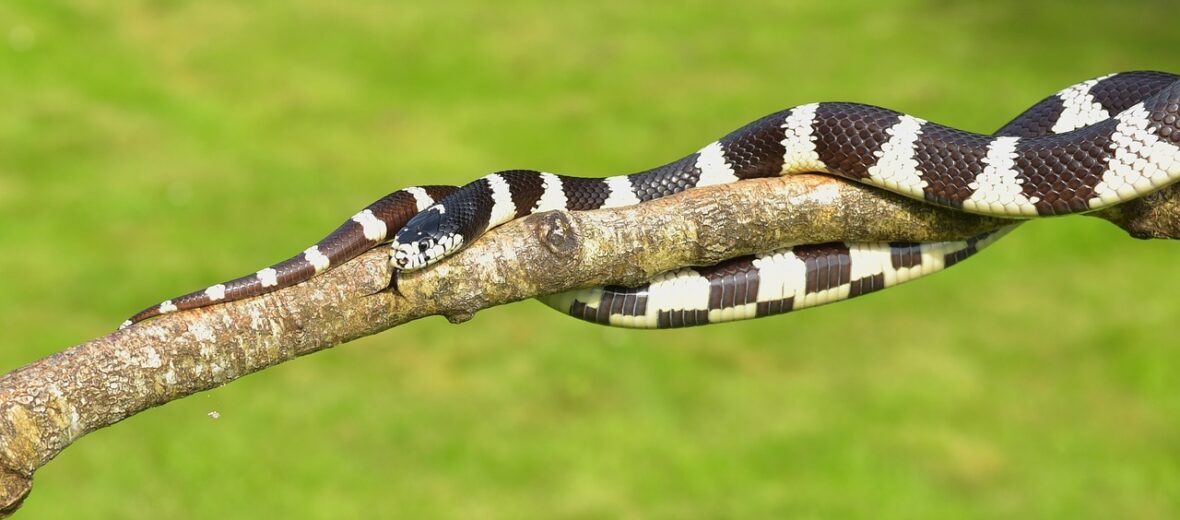
The California king snake, as it’s name states, primarily lives in California. However, they can be found in Arizona, Utah, Nevada, and even in North Texas too. They can live in deserts, forests, woodlands, chaparral, grassland, along rivers, around farms, and suburban areas with abundant shrubs. These reptile hunters can be spotted in mountain ranges all the way up to elevations of around 7,000 feet! They also make great pets. Read more, comment, and share!
First the Stats…
Scientific name: Lampropeltis getula californiae
Weight: Up to 1 lb.
Length: Up to 5 feet
Lifespan: Up to 20 years
Now on to the Facts!
1.) Typically diurnal (active during the day), kings can also adapt to being crepuscular (active during dawn and dusk) and nocturnal (active at night), if the temperatures get high enough to become uncomfortable.
2.) At higher elevations, when winter pays a visit, they go into brumation (hibernation).
3.) The California kingsnake typically sheds 4 – 6 times per year. They grow with every shed and continue to grow their whole life.
4.) Even though they don’t look like them, these snakes are constrictors. Preferring to squeeze their prey to death rather than rely on venom.
5.) During shed, like all snakes, they go what is called opaque. This is when their eyes have a foggy white color to them, where you can’t really see their pupils. During this time, they are nearly blind. Thus they hide in a safe place till they’ve finished shedding.
But wait, there’s more on the California kingsnake!
6.) When threatened, they will curl up, shake their tail (like a rattlesnake), and hiss.
7.) Their biggest predatory threats are owls, coyotes, hawks, skunks, opossums, and more.
Did you know…?
Kingsnakes like to hunt rattlesnakes and other venomous snakes and are virtually immune to their venomous bites.
8.) The lunch and dinner menu consists of lizards, frogs, rodents, birds, and their favorite – other snakes!
9.) Kings are oviparous (lays eggs outside the body). The female lays eggs between May – August.
10.) The female gives birth to between 5 – 12 eggs, but can lay more (up to 20). When the snakes hatch they are approximately 8 – 13 inches long.
Now a Short California King Snake Video!
Also, check out the Critter Science YouTube channel. Videos added frequently!
Want to suggest a critter for me to write about? Let me know here.



